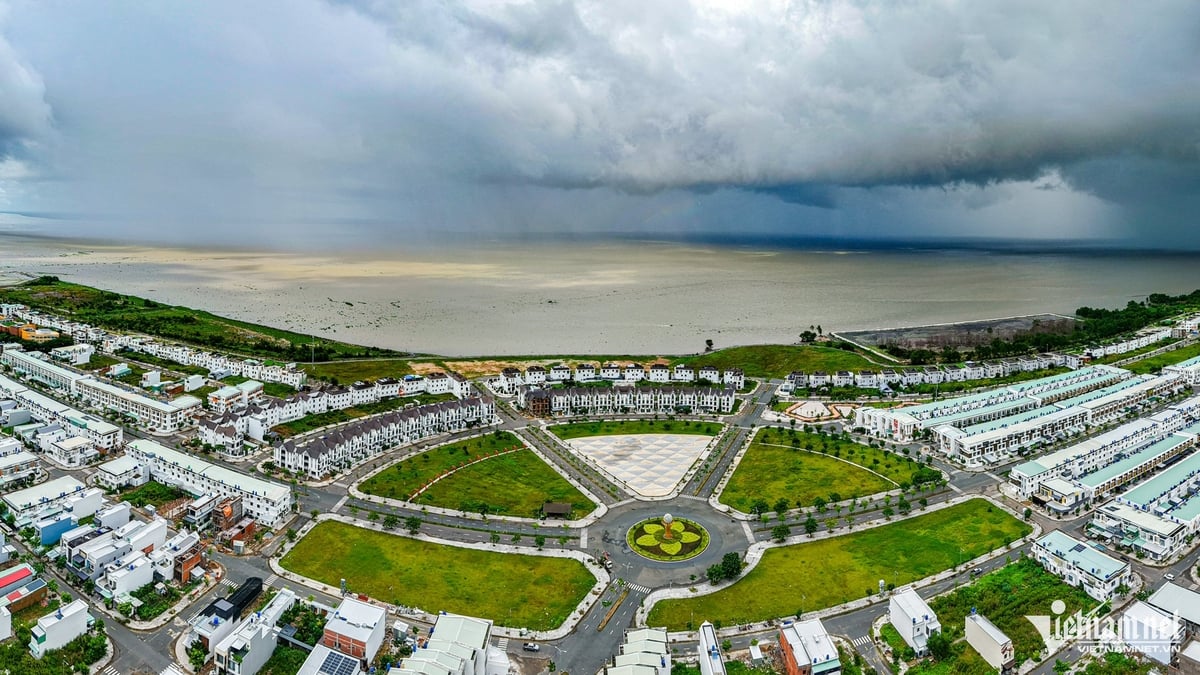Thay đổi cách tiếp cận, hoàn thiện kỹ lưỡng cơ chế thực hiện đang là giải pháp được đặt lên bàn thảo luận để phương thức hợp đồng xây dựng – chuyển giao (BT) phát huy hiệu quả trong huy động nguồn lực từ khu vực tư nhân.
 |
| Các dự án BT được đánh giá vẫn có một số đóng góp nhất định trong việc hoàn thiện hệ thống kết cấu hạ tầng. |
Hình thức đầu tư BT trở lại
Sự trở lại của phương thức hợp đồng BT trong Dự thảo Luật sửa đổi, bổ sung một số điều của Luật Quy hoạch, Luật Đầu tư, Luật Đầu tư theo phương thức đối tác công tư (PPP) và Luật Đấu thầu không đồng nghĩa với tái diễn những tồn tại khiến hình thức đầu tư này bị dừng vào năm 2021.
“Luật PPP đã dừng triển khai dự án BT vì các yếu tố bất cập và các dự án không thành công của giai đoạn trước. Nhưng nếu thay đổi cách tiếp cận, hoàn thiện kỹ lưỡng cơ chế thực hiện, khắc phục tối đa những bất cập của giai đoạn trước, BT vẫn là cách thức tốt để huy động nguồn lực từ khu vực tư nhân”, bà Nguyễn Thị Linh Giang, Chánh Văn phòng PPP, Cục Quản lý đấu thầu (Bộ Kế hoạch và Đầu tư) chia sẻ quan điểm của Ban soạn thảo tại Hội thảo lấy ý kiến Dự thảo Luật.
Phải nhắc lại, theo Luật PPP, kể từ năm 2021, hợp đồng BT không áp dụng đối với dự án đầu tư mới. Lý do được đưa ra khi đó là một số dự án không có mục tiêu đầu tư phù hợp, không cần thiết; giá trị công trình BT được xác định không chính xác, đa số dự án có suất đầu tư cao hơn so với dự án sử dụng vốn đầu tư công; việc lựa chọn nhà đầu tư chủ yếu được thực hện thông qua hình thức chỉ định thầu không cạnh tranh; công tác giám sát bị xem nhẹ dẫn đến chất lượng công trình không bảo đảm…
Trước đó, trước năm 2014, hình thức BT được áp dụng cả hai hình thức thanh toán bằng tiền và bằng quỹ đất theo Nghị định 108/2009/NĐ-CP. Kể từ năm 2014, Chính phủ dừng thực hiện hình thức thanh toán bằng tiền. Từ năm 2018, hình thức thanh toán bằng quỹ đất theo cơ chế ngang giá được luật hoá tại Luật Quản lý và sử dụng tài sản công.
Nhìn nhận lại giai đoạn này, nhiều bộ, ngành, địa phương có dự án BT cho rằng, các dự án này vẫn có một số đóng góp nhất định trong việc hoàn thiện hệ thống kết cấu hạ tầng tại các địa phương, huy động được nguồn lực của khu vực tư nhân, giúp giảm áp lực về vốn đầu tư công. Bên cạnh đó, các dự án đối ứng được thanh toán đầu tư cũng góp phần đáng kể cho việc cải thiện hạ tầng về nhà ở, dịch vụ, hình thành các đô thị mới, khu dân cư mới…
Đây cũng là cơ sở để Quốc hội cho phép 3 địa phương được thí điểm triển khai loại hợp đồng BT, gồm TP.HCM, TP. Hà Nội và Nghệ An. Tuy nhiên, cách thức áp dụng còn chưa thống nhất, tùy thuộc vào điều kiện đặc thù của từng địa phương. TP.HCM được áp dụng cơ chế BT thanh toán bằng tiền (sử dụng ngân sách thành phố). Nghệ An được áp dụng cơ chế BT thanh toán bằng tiền (sử dụng ngân sách nhà nước hoặc tiền thu từ đấu giá tài sản công, đấu giá quyền sử dụng đất). Hà Nội được áp dụng cơ chế BT thanh toán bằng tiền (ngân sách thành phố) hoặc thanh toán bằng quỹ đất.
Vẫn còn bài toán thanh toán bằng tiền hay bằng đất
Cho tới thời điểm này, cơ chế thanh toán bằng tiền hay bằng đất vẫn đang được cân nhắc. Trong Dự thảo Luật mà Bộ Kế hoạch và Đầu tư đang đưa ra lấy ý kiến, vẫn có 2 phương án được đưa ra.
Phương án 1 quy định áp dụng hợp đồng BT thanh toán cho nhà đầu tư bằng tiền. Phương án 2 là áp dụng cả cơ chế thanh toán bằng tiền và bằng đất.
Bà Linh Giang cho biết, điểm khác biệt so với giai đoạn trước là, các điều kiện triển khai chặt chẽ, nhưng tổng mức đầu tư dự án được xác định căn cứ trên cơ sở thiết kế kỹ thuật, tương tự công trình đầu tư công. Cách này sẽ tránh việc nâng khống giá trị công trình. Việc lựa chọn nhà đầu tư phải qua đấu thầu, không được chỉ định thầu…
Với phương án 1, nguồn thanh toán phải được bố trí trong kế hoạch đầu tư công trung hạn và hằng năm để có cơ sở thanh toán hoặc được chi trả trực tiếp cho nhà đầu tư dự án BT từ nguồn tiền thu được từ đấu giá tài sản công. Tuy nhiên, mô hình này vẫn có rủi ro, nếu chậm thanh toán, thì phần lãi phát sinh sẽ dẫn đến giá trị công trình tăng lên. Đây chính là bất cập đã xảy ra trong thực tế của nhiều dự án BT giai đoạn trước.
Mặt khác, đối với mô hình thanh toán bằng nguồn thu từ tiền đấu giá tài sản công, Ban soạn thảo cho rằng, sẽ phải xem xét, sửa đổi bổ sung Luật Ngân sách nhà nước (để cho phép áp dụng cơ chế tiền thu được từ bán đấu giá được chi trả trực tiếp cho nhà đầu tư dự án BT, mà không phải nộp về ngân sách nhà nước) và sửa đổi Luật Đấu giá tài sản (để cho phép nhà đầu tư dự án BT được hưởng ưu đãi khi tham gia đấu giá).
Phương án 2 cho phép áp dụng hợp đồng BT thanh toán cho nhà đầu tư bằng tiền (như phương án 1) và bằng quỹ đất. Phương án này tạo cơ sở pháp lý để huy động thêm nguồn lực từ đất đai cho đầu tư phát triển và phần nào khắc phục được bất cập trong việc xác định giá trị công trình BT, giá trị quỹ đất thanh toán tại thời điểm lập dự án, đấu thầu, ký kết hợp đồng.
Tuy nhiên, phương án này chưa xử lý được tình trạng giá trị quỹ đất thực tế tại thời điểm giao đất vượt gấp nhiều lần giá trị quỹ đất dự kiến tại hợp đồng; mặc dù cho phép cơ chế bù trừ chênh lệch nhưng vẫn thiếu cơ sở để giao toàn bộ quỹ đất dự kiến cho nhà đầu tư theo cam kết tại hợp đồng.
Đối với phương án này, trong quá trình lấy ý kiến, có đề xuất không sử dụng tài sản công để thanh toán dự án BT, mà chỉ sử dụng quỹ đất do Nhà nước quản lý theo quy định tại Điều 217, Luật Đất đai năm 2024 để thanh toán cho nhà đầu tư.
Ngoài ra, đề nghị bổ sung loại hợp đồng BT không yêu cầu thanh toán, áp dụng đối với trường hợp nhà đầu tư đề xuất đầu tư xây dựng công trình và chuyển giao cho Nhà nước quản lý, sử dụng mà không yêu cầu thanh toán chi phí đầu tư xây dựng…
Rõ ràng, việc lựa chọn cơ chế nào sẽ cần phải cân nhắc nhiều, để đạt được mục tiêu khắc phục các vấn đề bất cập của mô hình này, đồng thời hoàn thiện quy định để đáp ứng yêu cầu mới của thực tiễn.
Theo kế hoạch, Dự thảo Luật sửa đổi, bổ sung một số điều của Luật Quy hoạch, Luật Đầu tư, Luật Đầu tư theo phương thức đối tác công tư (PPP) và Luật Đấu thầu sẽ được hoàn thiện, trình Quốc hội trong kỳ họp tháng 10 tới đây.
Các dự án PPP mới triển khai theo quy định của Luật PPP dự kiến hình thành khoảng 1.000 km đường cao tốc, 2 cảng hàng không tiêu chuẩn cấp 4C, 3 công trình xử lý chất thải rắn cấp đặc biệt, 3 nhà máy cung cấp nước sạch, góp phần mở rộng, nâng cấp các công trình kết cấu hạ tầng giao thông, kinh tế – xã hội của các địa phương.
Tuy nhiên, những hạn chế, bất cập trong các quy định của Luật vẫn còn và đang được sửa đổi.






























































































Bình luận (0)